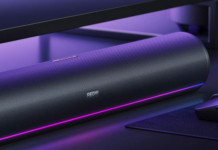The much-anticipated HyperOS 3 software is finally here with plenty of improvements, AI-driven features, numerous visual upgrades, and expanded cross-device integration. At the event held today in China, Xiaomi announced all the changes in the newest software as well as its rollout plans for smartphones, smartwatches, and smart TVs.
If you have been waiting for this major upgrade on your Xiaomi device, here’s everything you need to know, including the latest changes, eligible devices, and rollout timeline.
Xiaomi HyperOS 3 rollout timeline
Xiaomi will begin rolling out the HyperOS 3 beta update from August 29 to select devices. It will gradually expand the beta program to more devices over the coming days and weeks.
Here’s the HyperOS 3 beta rollout timeline for China:
Phase 1 (from August 29)
- Xiaomi 15 Ultra
- Xiaomi 15S Pro
- Xiaomi 15 Pro
- Xiaomi 15
- REDMI K80 Pro
- REDMI K80 Ultimate Edition
- Xiaomi Pad 7S Pro 12.5
- Xiaomi Pad 7 Pro
Phase 2 (By September 17)
- Xiaomi MIX Flip 2
- REDMI K80
- Xiaomi Pad 7 Ultra
- Xiaomi Pad 7
- REDMI K Pad
- Xiaomi TV S Pro Mini LED 2025 Series
- Xiaomi TV S Pro Mini LED Series
Phase 3 (By September 30)
- Xiaomi MIX Fold 4
- Xiaomi MIX Flip
- Xiaomi 14 Ultra / Xiaomi 14 Ultra Titanium Special Edition
- Xiaomi 14 Pro / Xiaomi 14 Pro Titanium Special Edition
- Xiaomi 14
- REDMI K70 Pro
- REDMI K70 Ultimate Edition
- REDMI K70
- REDMI K70E
- Xiaomi Pad 6S Pro 12.4
Please note that this is the beta roadmap for China. It doesn’t apply to other regions.
What’s new in HyperOS 3?
HyperOS 3 builds upon the HyperCore technology, which was introduced last year. With the latest advancements, the CPU load has been reduced by 4% and the energy efficiency has improved by 10%. Additionally, the frame loss rate is claimed to have been reduced by 18.9%.
The latest software introduces a hot-swappable scheduling mechanism and a fully enabled graphics scheduling link, which brings notable improvements to gaming, including a 21% improvement in app launch speed, a 10% improvement in video playback, and a 9% reduction in touch response latency.
Xiaomi claims to have optimized over 100 system animations, resulting in a more fluid and responsive software experience.
Talking about visual upgrades, HyperOS 3 introduces Xiaomi Super Island — a new dynamic hub for monitoring multiple live activities and notifications. This feature supports over 70 integrated services. It also brings AI dynamic wallpapers that can automatically apply depth effects, redesigned icons, and desktop grids.
Additionally, there are cinematic lock screens and a single interface to edit lock screens and wallpapers. The Photo Album is updated with intelligent search and automatically curated Pet Albums.
HyperOS 3 enhances the device’s intelligence with AI upgrades. The Super XiaoAi Assistant gets on-screen content awareness. This means it can analyse what’s being displayed on the screen and provide answers based on that. Furthermore, you can now circle on-screen content to trigger instant actions such as search, translation, or sharing. It works similarly to Google’s Circle to Search.
Xiaomi has also worked on improving the interconnectivity between devices across ecosystems. With HyperOS 3, Xiaomi phone users can open mobile app windows (up to 3) on their Mac. The phone can now be unlocked via Touch ID or Face ID. Users can also seamlessly share files and view photos on an iPhone.
As always, there’s something to privacy and security. Xiaomi adds two-factor authentication login for multi-device account login, enhanced data protection, and better control over app permissions. Xiaomi says users can locate their lost devices even if they are powered off.
What are your thoughts on HyperOS 3? Write them in the comments below















Comments